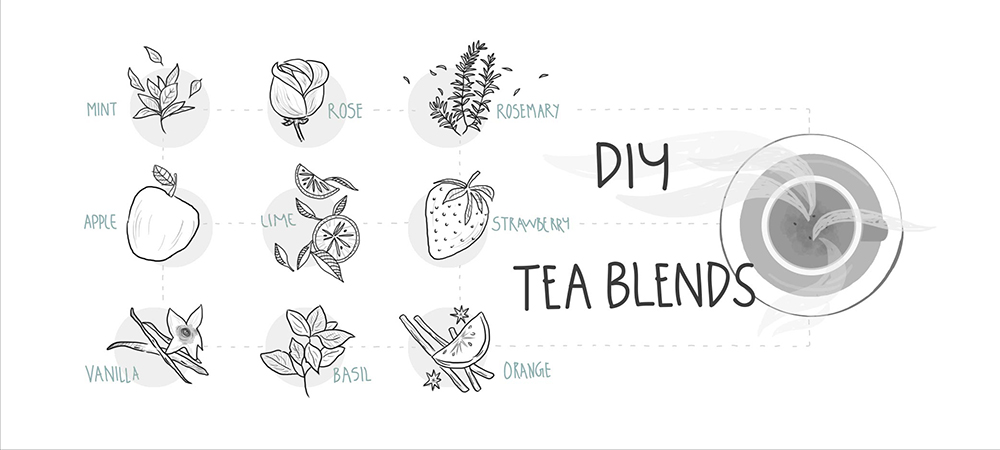Have you ever stood in front of your kitchen shelf, staring aimlessly at your stash of tea, overcome by a dulling monotony that comes with seeing ‘the ‘same-ol’ thing over and over again? Your tea, you think, needs pep and perk.
Or you’re feeling especially adventurous, ready to break some rules and get a little playful with tea.
Or you look at something and go, “Hey, you know what could make this better? Maybe a dash of this or a bit of that.”
Then you’ve come to the right place: a post on tea blending.
If you ask me, blending tea is more art than science because it demands more imagination than intention. For instance, knowing which complementary proteins work best is where the science bit of things comes into picture. But then again, it isn’t rocket science to figure out that dairy and legume isn’t the most palatable flavor combination in the world.
[bctt tweet=”Blending tea is more art than science because it demands more imagination than intention.”]
Here’s what I have found in my quest for DIY tea-blending techniques:
1. It’s a rule-free game. There are no set recipes and no conventions, per se. The activity is entirely mood-driven and that’s what makes it so exciting – you never know what you may end up creating. Element of surprise, check!
2. The more the kinds of flavors you know, the more easily you will take to creating blends. Professional tea blenders spend years familiarizing themselves with a whole world of flavors – spices, fruits, vegetables and so many other aromatics. This helps them
(a) Identify the presence/absence of a flavor from a tea itself.
(b) Stock their blending table with far more exotic ingredients than you and I can get our hands on.
But, fret not. You can easily indulge in a tea blends session by using ingredients from your pantry – few spices, sprigs of herbs, and maybe even flowers from the backyard. The key is in learning to balance flavors.
3. It’s important to be fearless. Don’t hold back from throwing strawberries, lemongrass and hibiscus into a tea – flavor can work in mysterious ways!
4. It’s best to use dehydrated ingredients to blend into your tea. Dry ingredients tend to have more concentrated flavors and brew better than fresh ones. See that rose bud in your vase drying up? Well, let it, and then use it to create a tea blend.
FYI, rose pairs impeccably with a winter flush Nilgiri black tea.
And always taste the ingredients separately. This way you can mentally try and gauge if it can work in a blend.
5. (And this is an expert tip) Always use ingredients of similar density and size to avoid de-blending. If ingredients of different sizes are blended together then the heavy and small particles tend to collect and settle down at the bottom of the container, blocking any addition of other flavors. In other words, too much of one thing is a bad ju-ju for a blend.
BTW, when blending spices, crush them and then mix with the choice of tea. With flowers, you should use individual petals or small buds. With dried fruit, it’s best to chop them all to the same size.
6. Try and retain the tea as the hero of the blend. Nearly two thirds of the blend should be tea. Lighter the tea, the lower the concentration of the ingredient to be added. For instance, when using First Flush Darjeeling tea for a blend, avoid strong, intensely aromatic flavors like cardamom or ginger. These flavors overpower the inherent flavor of the tea. Instead, try the more delicate spring flowers (lavender or chamomile) for a more balanced palate experience.
7. Start blending with only 1 or 2 ingredients. It’s easier to work up the complexity. Remember, creating flavor layers in a blend takes time and skill.
8. If blending for iced tea, start by tasting the tea with ice to see if it tastes good. Darjeelings make great iced teas and lend well to the addition of sugar syrup and mint. If using Nepal teas, use a lot of fresh fruit. The Nilgiri and Assam teas are delicious when iced and accommodate flavors of spices and milk readily.
A good iced tea is bright and clear in the glass and should not cloud.
With inputs from Shruti Tripuraneni
Illustration by Aditi Dilip

